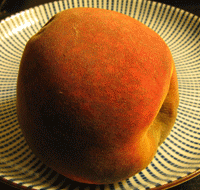Molds are ubiquitous in nature, and mold spores are a common component of household and workplace dust. However, when spores are present in large quantities, they are a health hazard to humans, potentially causing allergic reactions and respiratory problems. Some molds also produce mycotoxins that can pose serious health risks to humans and animals. The term "toxic mold" refers to molds that produce mycotoxins, such as Stachybotrys chartarum, not to all molds. Exposure to high levels of mycotoxins can lead to neurological problems and in some cases death. Prolonged exposure, e.g., daily workplace exposure, can be particularly harmful.

Molds are usually not a problem indoors, unless mold spores land on a wet or damp spot and begin growing. Molds have the potential to cause health problems. Molds produce allergens (substances that can cause allergic reactions), irritants, and in some cases, potentially toxic substances (mycotoxins). Inhaling or touching mold or mold spores may cause allergic reactions in sensitive individuals. Allergic responses include hay fever-type symptoms, such as sneezing, runny nose, red eyes, and skin rash (dermatitis). Allergic reactions to mold are common. They can be immediate or delayed. Molds can also cause asthma attacks in people with asthma who are allergic to mold. In addition, mold exposure can irritate the eyes, skin, nose, throat, and lungs of both mold-allergic and non-allergic people. Symptoms other than the allergic and irritant types are not commonly reported as a result of inhaling mold. Research on mold and health effects is ongoing.
There are thousands of known species of molds which have diverse life-styles including saprotrophs, mesophiles, psychrophiles and thermophiles and a very few opportunistic pathogens. They all require moisture for growth and there are some aquatic species. Like all fungi, molds derive energy not through photosynthesis but from the organic matter on which they live, utilising heterotrophy. Typically, molds secrete hydrolytic enzymes, from the hyphal tips. These enzymes degrade complex biopolymers such as starch, cellulose and lignin into simpler substances which can be absorbed by the hyphae. In this way molds play a major role in causing decomposition of organic material, enabling the recycling of nutrients throughout ecosystems. Many molds also synthesise mycotoxins and siderophores which, together with lytic enzymes, inhibit the growth of competing microorganisms. Molds reproduce through producing very large numbers of small spores, which may contain a single nucleus or be multinucleate. Mold spores can be asexual (the products of mitosis) or sexual (the products of meiosis); many species can produce both types. Mold spores may remain airborne indefinitely, may cling to clothing or fur or may be able to survive extremes of temperature and pressure.
Although molds can grow on dead organic matter everywhere in nature, their presence is visible to the unaided eye only when mold colonies grow. A mold colony does not consist of discrete organisms but of an interconnected network of hyphae called a mycelium. All growth occurs at hyphal tips, with cytoplasm and organelles flowing forwards as the hyphae advance over or through new food sources. Nutrients are absorbed at the hyphal tip. In artificial environments such as buildings, humidity and temperature are often stable enough to foster the growth of mold colonies, commonly seen as a downy or furry coating growing on food or other surfaces.
Find out more here Mold Testing Services

No comments:
Post a Comment